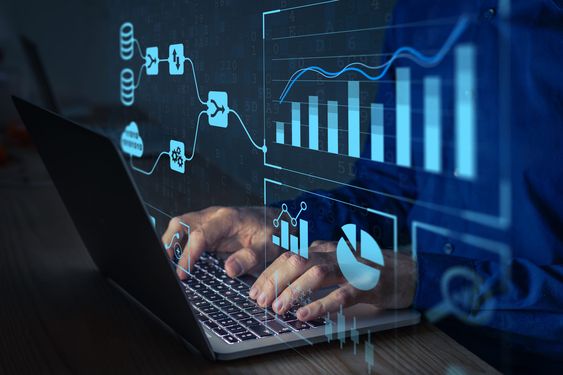Reynaldo C. Lugtu, Jr. l May 3, 2024 l Business World

I like reading about studies and surveys comparing the Philippines with other countries. They provide not only a good benchmarking exercise, but also some analytical comparisons and correlations of different metrics and indicators to make sense of the hype and clutter in the news. This time of the year is when most of these studies come out. Let’s examines some of them.
The Asian Development Bank projects the Philippines to sustain strong GDP growth in 2024 and 2025, with anticipated expansions of 6% and 6.2%, respectively. This positions the Philippines among the fastest-growing economies in Southeast Asia. In fact, The Economist recently published a piece titled, “Without fanfare, the Philippines is getting richer.”
At the backdrop is the headline that more Filipinos are hungry in the first quarter of 2024, according to the latest survey by the private pollster Social Weather Stations (SWS), which revealed that 14.2% of Filipino families experienced hunger or lacked food at least once in the past three months, exceeding the hunger incidence of 12.6% from the previous quarter.
In another recent SWS survey revealed that 46% of Filipino families felt poor in March 2024, which is merely 2% lower than the 48% annual average self-rated poor families in 2023.
On the other hand, the combined fortune of Forbes’ list of the 50 most affluent in the country grew by 11% from US$72 billion to US$80 billion in 2023, which was due to “robust consumer demand” in consumer goods, property, and retail, according to the report of South China Morning Post.
So, is the economic growth of the Philippines not trickling down to its people? Or perhaps it’s leading to the development of human capital in the country. Let’s examine.
The Philippines ranked 77th out of 81 countries globally in reading, mathematics, and science proficiency for 15-year-old learners, according to the 2022 Programme for International Student Assessment (PISA) rankings conducted by the Organization for Economic Co-operation and Development (OECD). Despite a 2-point increase from the national average of 353 points in PISA 2018, the Philippines still ranked among the lowest in the 2022 assessment.
In another study, the Philippines fell six places in the Institute for Management Development (IMD) World Competitiveness Center’s annual World Talent Ranking (WTR) 2023, landing at 60th out of 64 countries, compared to 54th out of 63 economies the previous year. In the Asia-Pacific region, the Philippines ranked 13th out of 14 countries, surpassing only Mongolia in talent competitiveness.
So, our country is lagging in human capital development, how about in infrastructure? Let’s examine this.
So, is the economic growth of the Philippines not trickling down to its people? Or perhaps it’s leading to the development of human capital in the country. Let’s examine.
The Philippines ranked 77th out of 81 countries globally in reading, mathematics, and science proficiency for 15-year-old learners, according to the 2022 Programme for International Student Assessment (PISA) rankings conducted by the Organization for Economic Co-operation and Development (OECD). Despite a 2-point increase from the national average of 353 points in PISA 2018, the Philippines still ranked among the lowest in the 2022 assessment.
In another study, the Philippines fell six places in the Institute for Management Development (IMD) World Competitiveness Center’s annual World Talent Ranking (WTR) 2023, landing at 60th out of 64 countries, compared to 54th out of 63 economies the previous year. In the Asia-Pacific region, the Philippines ranked 13th out of 14 countries, surpassing only Mongolia in talent competitiveness.
So, our country is lagging in human capital development, how about in infrastructure? Let’s examine this.
Metro Manila claimed the top spot in the 2023 TomTom Traffic Index among 387 cities across 55 countries, with the slowest travel time. On average, it takes 25 minutes and 30 seconds to travel 10 kilometers within Metro Manila.
Manila, the capital of the Philippines, descended six spots to 121st out of 142 cities globally in the latest Smart City Index, according to the 2024 Smart City Index (SCI) by IMD World Competitiveness Center’s Smart City Observatory. The index combines data and survey responses to gauge how technology aids cities in addressing challenges and enhancing inhabitants’ quality of life, focusing on human-centric approaches. Manila’s decline was attributed to concerns regarding health services, corruption/transparency, and unemployment.
No wonder Philippine workers ranked the most stressed in Gallup’s State of the Global Workplace 2023 Report which revealed that 45% of Filipino employees experienced a substantial level of stress in the preceding day before the survey was conducted.
As a rejoinder, the prospect of the Philippine economy is, indeed, bright. But its growth is not enough to be felt by many Filipinos in the coming years. Historically, the Philippine economy has grown in the vicinity 6% at best, with only two instances in the last three decades with more than 7% GDP growth, i.e. in 2010 (7.3%) and in 2022 (7.6%).
On the other hand, Vietnam’s economy has grown at a faster rate than that of the Philippines in the last three decades, resulting in it overtaking the Philippines in terms of per capita income in 2020; and at the rate that Cambodia’s economy has been consistently growing, it will overtake the Philippines soon.
But why can’t the Philippines grow at a faster and consistent pace?
Based on the 2023 Corruption Perception Index (CPI) report, the Philippines scored 34 out of 100 which is below 50, indicating “serious corruption problems”; and this score barely moved over the years since 2012.
There are obvious leaks in the system. The indicators in human capital and infrastructure developments likewise do not augur well.
Surely, the Philippine economy will grow, but not at spectacular levels relative to the experience of neighboring countries. Unless the government, the private sector, and the populace collectively change the director of critical metrics and indicators.
The views expressed herein are his own and does not necessarily reflect the opinion of his office as well as FINEX.
*** Reynaldo C. Lugtu, Jr. is the founder and CEO of Hungry Workhorse, a digital, culture, and customer experience transformation consulting firm. He is a fellow at the US-based Institute for Digital Transformation. He is the Chair of the Digital Transformation IT Governance Committee of FINEX Academy. He teaches strategic management and digital transformation in the MBA Program of De La Salle University. The author may be e-mailed at rey.lugtu@hungryworkhorse.com

